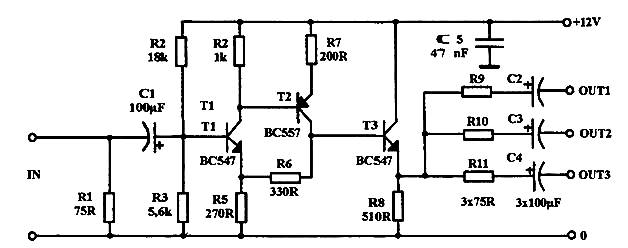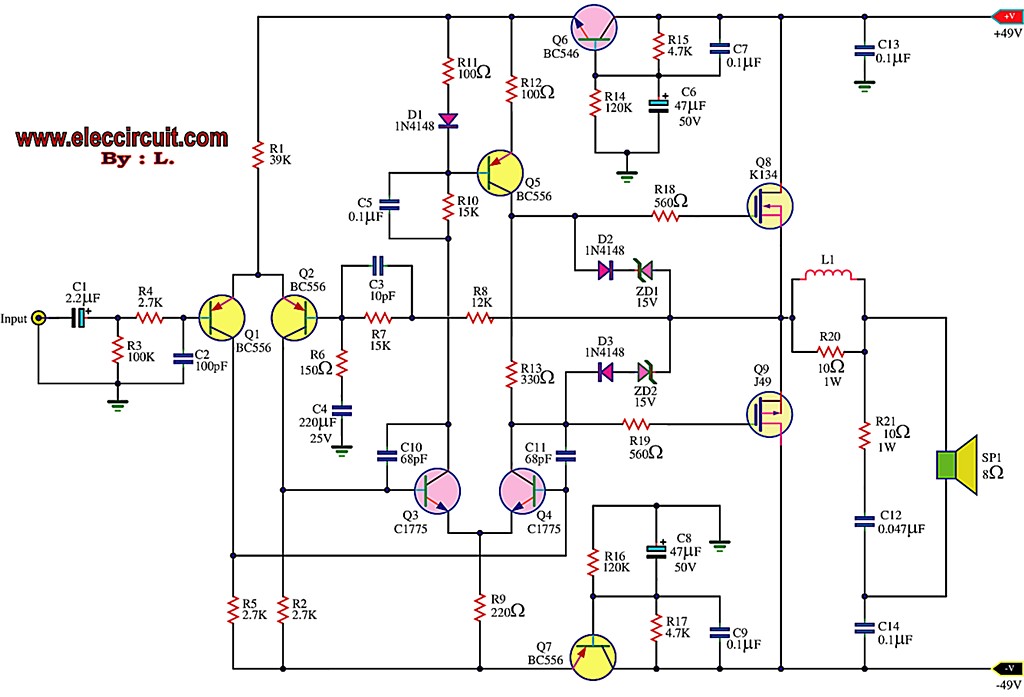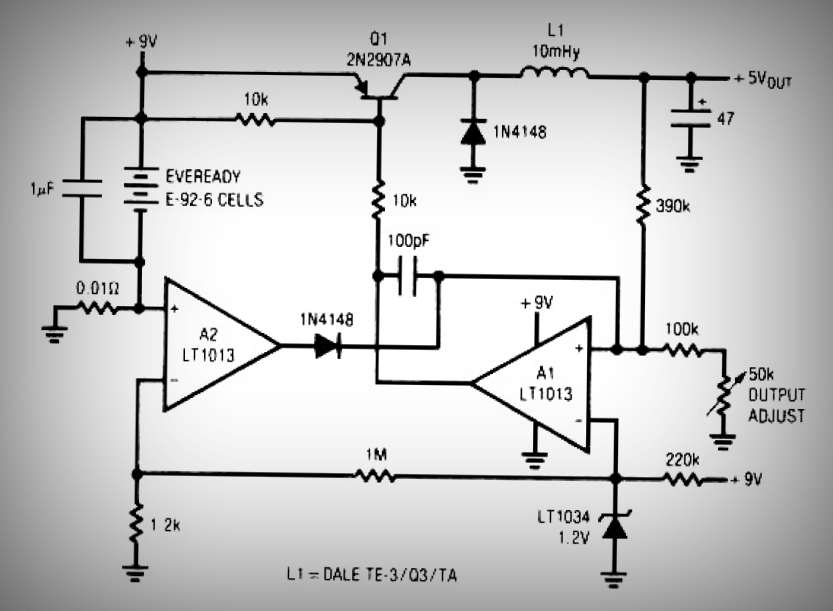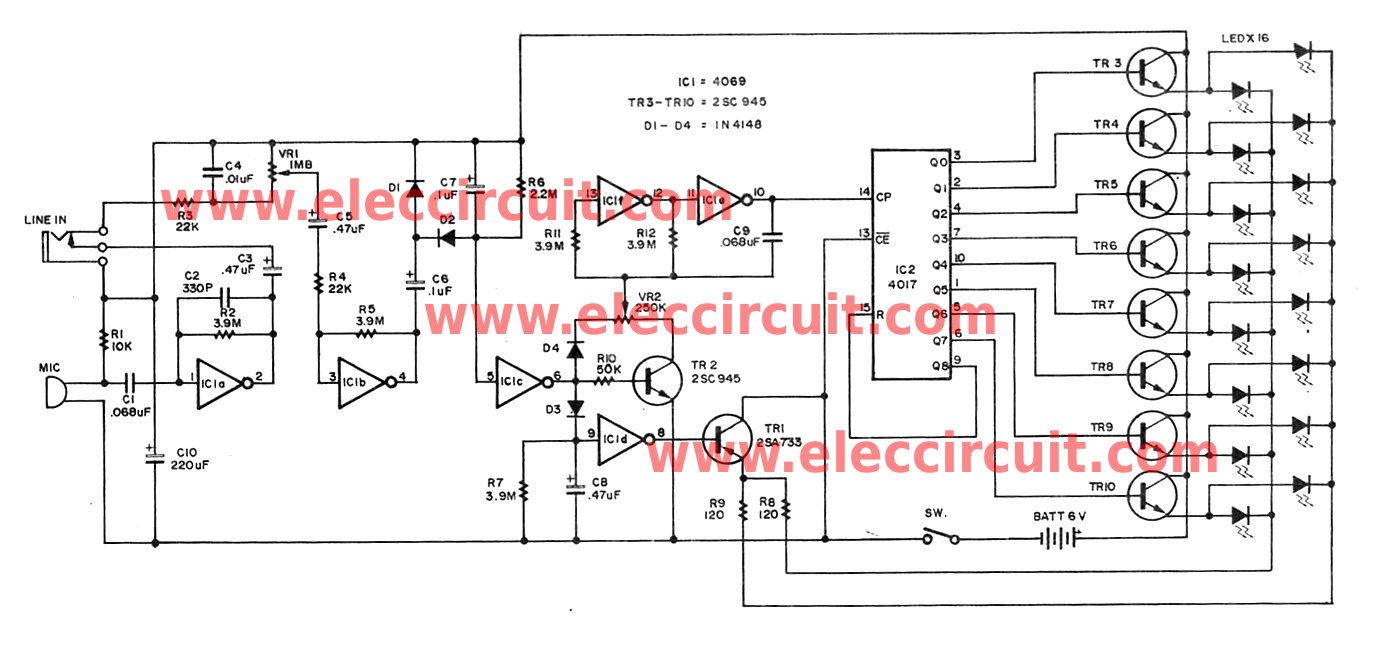
Audio Power Amplifier
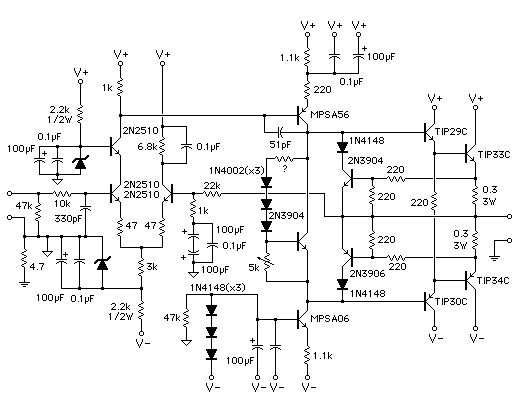
Measure the voltage across the 1k resistor connected to the input stage and Vcc. The DC voltage should be approximately 2 volts, or 2 mA of current flowing through this resistor. For instance, if Vcc is at 24 volts, the side of this resistor connected to the 2N5210 transistor should be around 22 volts. Gradually adjust the variable resistor until the amplifier's current consumption reaches approximately 50 mA. Exercise caution during this adjustment, as turning it too far could damage the output transistors. Connect an oscilloscope to the output and apply a low amplitude 20 kHz square wave to the input. Do not connect any speakers during this test, which should be conducted without the 330 pF capacitor installed. The amplifier should output a 20 kHz square wave with minimal "ringing" and should not oscillate. After completing this test, turn off the power, connect the audio input and a speaker, ensuring that the volume is set to the minimum. Apply power and monitor the current meter, shutting off the power immediately if the current exceeds 50 mA. Gradually increase the volume to test the amplifier's functionality, but do not increase it excessively. The amplifier should not operate with a supply voltage lower than +/- 30 volts and should not be used for high volume output without a power supply rated for at least 2 amps of current (8 ohm load). Following this initial test with +/- 24V at 200 mA (current limited), only a proper power supply capable of providing sufficient current should be utilized.
To execute the testing procedure effectively, it is crucial to ensure that the circuit is configured correctly before applying power. The 1k resistor serves as a current-limiting component, allowing for safe measurement of the voltage drop across it. The anticipated voltage of approximately 2 volts indicates that the circuit is functioning within expected parameters, and the current should be closely monitored to prevent exceeding the safe operating limits of the output transistors.
When adjusting the variable resistor, it is advisable to proceed slowly to avoid sudden changes in current that could lead to damage. The oscilloscope serves as a vital tool for visualizing the output waveform, and the absence of the 330 pF capacitor during this test is critical to eliminate potential phase shifts that could affect the results. A clean 20 kHz square wave with minimal ringing indicates proper amplifier performance, while oscillation suggests instability in the circuit that needs to be addressed.
After the initial testing phase, connecting the audio input and speaker should be done with caution. The volume should remain at a low setting initially to prevent any unexpected surges in current. Monitoring the current meter during this phase will help ensure that the amplifier operates within its safe limits. It is essential to adhere to the specified supply voltage requirements, as operating below +/- 30 volts can lead to suboptimal performance or damage. Finally, using a power supply capable of delivering at least 2 amps for an 8 ohm load is critical for achieving reliable high-volume output without risking damage to the amplifier.Measure voltage across the 1k resistor connected to the input stage and Vcc. The DC voltage should be about 2 volt, or 2 mA of current through this resistor. Eg, if Vcc is at 24 volts, the side of this resistor connected to the 2N5210 transisor ought to be at about 22 volts. Turn the variable resistor slowly until the amplifer`s current consumption is approx 50 mA. Turn slowly and be careful. if you turn too far you could damage the output transistors. Conect an oscilloscope to the output and apply a low amplitude 20 kHz square wave to the input. DO NOT connect any speakers during this test. This test should be done without the 330 pF capacitor installed. The amp should output a 20 kHz square wave with very little "ringing". It should not oscillate. Shut off the power, connect audio input and a speaker. Make sure the volume is turned all the way down. Apply power. watch current meter again and shut off the power immediately if the current jumps to something much higher than 50 mA. Slowly turn up the volume and see if the amp works. DO NOT turn it up very much. the amplifier should not be operated with a supply less than +/- 30 volts. It should never be used for high volume output without a power supply rated for at least 2 amps of current (8 ohm load).
After this initial test with +/- 24V at 200 mA (current limited) only a proper power supply should be used which can provide enough current. 🔗 External reference
To execute the testing procedure effectively, it is crucial to ensure that the circuit is configured correctly before applying power. The 1k resistor serves as a current-limiting component, allowing for safe measurement of the voltage drop across it. The anticipated voltage of approximately 2 volts indicates that the circuit is functioning within expected parameters, and the current should be closely monitored to prevent exceeding the safe operating limits of the output transistors.
When adjusting the variable resistor, it is advisable to proceed slowly to avoid sudden changes in current that could lead to damage. The oscilloscope serves as a vital tool for visualizing the output waveform, and the absence of the 330 pF capacitor during this test is critical to eliminate potential phase shifts that could affect the results. A clean 20 kHz square wave with minimal ringing indicates proper amplifier performance, while oscillation suggests instability in the circuit that needs to be addressed.
After the initial testing phase, connecting the audio input and speaker should be done with caution. The volume should remain at a low setting initially to prevent any unexpected surges in current. Monitoring the current meter during this phase will help ensure that the amplifier operates within its safe limits. It is essential to adhere to the specified supply voltage requirements, as operating below +/- 30 volts can lead to suboptimal performance or damage. Finally, using a power supply capable of delivering at least 2 amps for an 8 ohm load is critical for achieving reliable high-volume output without risking damage to the amplifier.Measure voltage across the 1k resistor connected to the input stage and Vcc. The DC voltage should be about 2 volt, or 2 mA of current through this resistor. Eg, if Vcc is at 24 volts, the side of this resistor connected to the 2N5210 transisor ought to be at about 22 volts. Turn the variable resistor slowly until the amplifer`s current consumption is approx 50 mA. Turn slowly and be careful. if you turn too far you could damage the output transistors. Conect an oscilloscope to the output and apply a low amplitude 20 kHz square wave to the input. DO NOT connect any speakers during this test. This test should be done without the 330 pF capacitor installed. The amp should output a 20 kHz square wave with very little "ringing". It should not oscillate. Shut off the power, connect audio input and a speaker. Make sure the volume is turned all the way down. Apply power. watch current meter again and shut off the power immediately if the current jumps to something much higher than 50 mA. Slowly turn up the volume and see if the amp works. DO NOT turn it up very much. the amplifier should not be operated with a supply less than +/- 30 volts. It should never be used for high volume output without a power supply rated for at least 2 amps of current (8 ohm load).
After this initial test with +/- 24V at 200 mA (current limited) only a proper power supply should be used which can provide enough current. 🔗 External reference
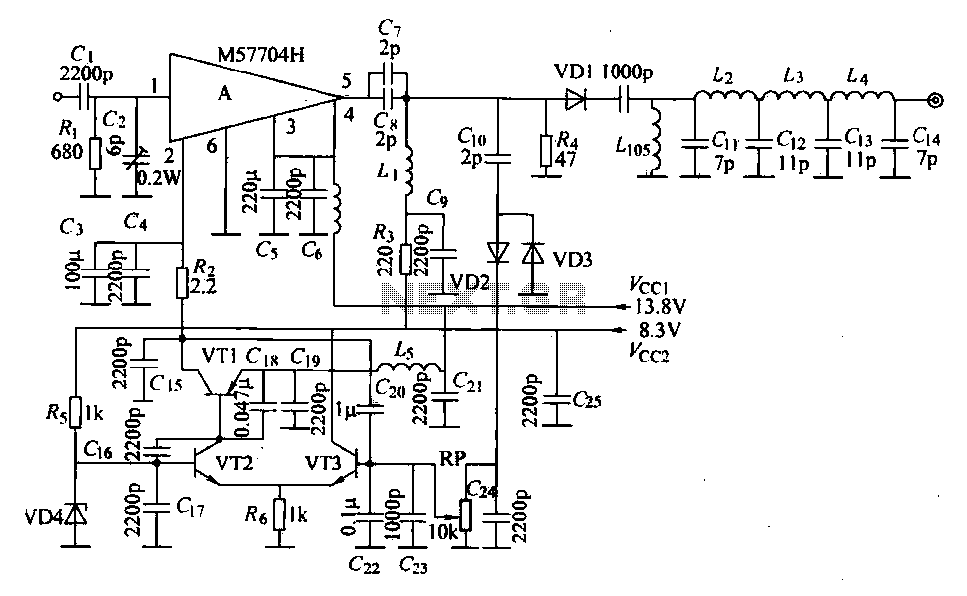
.jpg)
